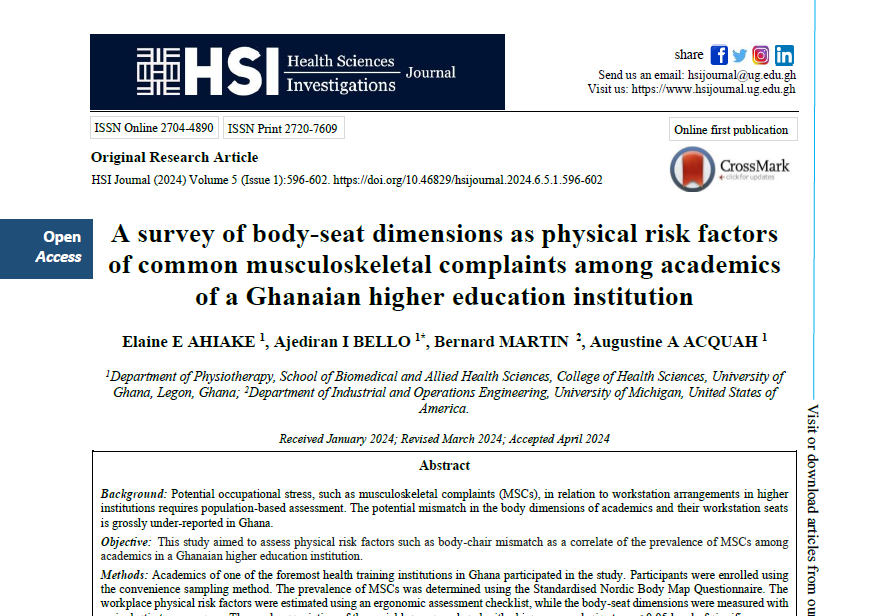A survey of body-seat dimensions as physical risk factors of common musculoskeletal complaints among academics of a Ghanaian higher education institution.
A survey of body-seat dimensions as physical risk factors of common musculoskeletal complaints.
Abstract
Background: Potential occupational stress, such as musculoskeletal complaints (MSCs), in relation to workstation arrangements in higher institutions requires population-based assessment. The potential mismatch in the body dimensions of academics and their workstation seats is grossly under-reported in Ghana.
Objective: This study aimed to assess physical risk factors such as body-chair mismatch as a correlate of the prevalence of MSCs among academics in a Ghanaian higher education institution.
Methods: Academics of one of the foremost health training institutions in Ghana participated in the study. Participants were enrolled using the convenience sampling method. The prevalence of MSCs was determined using the Standardised Nordic Body Map Questionnaire. The workplace physical risk factors were estimated using an ergonomic assessment checklist, while the body-seat dimensions were measured with
an inelastic tape measure. The crude association of the variables was analysed with chi-square analysis at a p < 0.05 level of significance.
Results: Eighty-two academics, comprising 65.90% (n = 54) males and 34.10% (n = 28) females, participated in the study between October and December 2021. The point and period prevalence of MSC were 59.60% and 64.60%, respectively, and low back pain was the most reported MSC (73.60%). Over half (53.70%) of the staff reported high physical risks regarding their work activities. The body-chair mismatch and their self-reported workstation risk factors were also significantly associated with MSCs (p < 0.001).
Conclusion: A mismatch in the body dimensions of the participants relative to their seats seems to be partly responsible for the moderate prevalence of MSC, of which low back pain constituted the most reported complaint.


